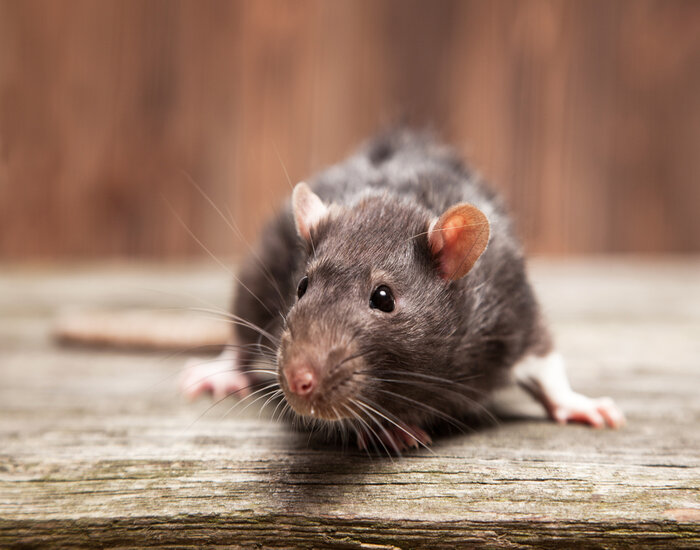
Have you been hearing a scurry across your ceiling lately? Thinking your house might be haunted?
It's worse...sounds like you might have pests in the attic!
While supernatural hauntings might seem terrifying, they can easily be placated with a little holy spirit. Living monsters like rodents and other pests, though...those are the real horrors that hide in the dark.
You better act fast to get those pests removed from the attic before they take over the whole house!
Read on to find out all you need to know about rodent control and pest removal.
Pests are a nuisance in any house.
They're small, invasive, and multiplying rapidly. These are the common pests you might find making a home in your attic, uninvited.
Now, you're probably wondering how pests and rodents infiltrated your attic in the first place. It's airtight, no?
Not to a little rascal like a rodent.
The attic is easily accessible for pests and rodents for two reasons: 1) tree branches and power lines provide easy access to this area of the house. 2) many small entryways can be found into the attic for pipes, wiring, ventilation, and heating.
Let's take a look at how rodents can ransack your attic.
Most animals need some source of heat, both warm- and cold-blooded animals.
When it's cold out, the attic starts to look like a good resting ground for the night, or fortnight.
The warm air emanating from your home's ventilation panels is a welcome sign to pests and rodents.
This includes:
Most of these panels are made of metal, but some are constructed of wood or plastic. Many rodents have teeth specifically designed for cracking open the solid exterior of nuts and seeds.
See how this might be a problem?
Squirrels, especially, are very adept at gnawing through an old panel itself, or the foam insulation that lines it. And birds can easily fly right up to a slatted vent and take nest inside your attic.
Roofs are quite efficient at protecting against weather and other elements of nature. But their defenses against tiny invaders?—not so much.
Places where the roof joins together with either a wall or another section of roofing become easy-access entry points for pests. This is due to moisture damage.
Water elements like rain, snow, and ice formations are meant to slide off the roof and onto the ground. For the most part, the water does as intended. However, especially at intersections at joints, this water will collect and build up.
As roofs age, they become weakened due to this water damage.
These thickly moistened roof edges then become an easy target for the gnawing teeth of a rodent. A couple of hours and they'll have chewed a tunnel right into your attic.
In some cases, pests don't even have to dig their way inside. They can just walk right in.
Some shingles can become dislodged over time. And when this happens at a point where two roof sections intersect, direct access can be achieved. It's a small gap that might be missed by water drainage, but a rodent can squeeze right in.
Electrical wiring and plumbing sometimes require access to the outside through your attic.
During installation for the tubing and panel boxes, holes can sometimes be drilled a bit larger than necessary. These holes are then filled in with rubber matting to seal it off from the elements.
However, like insulation lining, this matting can be easily chewed through. All it takes is one, persevering pest to gnaw through and make home in your attic.
So we know how they got in...now how do we get them out of the attic?
Well, let me ask you a question: are you a good witch, or a bad witch?
There are several styles of traps available for purchase, but if you're going the route of trapping the pests we recommend humane traps.
They allow for a controller manner of removing the animal without harming it.
Contact your local wildlife refuge for advice on how to properly rehabilitate the critter you've just caught.
If you'd like to be one and done with it, it's best to call up an exterminator.
Rather than setting up multiple traps and disposing of the remains yourself, a rodent removal professional can manage it all in a timely manner. It's the peace of mind worth investing in, so make an appointment!
The fun isn't over just yet.
After getting rid of the current residents, you'll have to do all in your power to make sure they don't come back!
First, get rid of all the remains. Scents and territory markings, fecal matter, nesting materials—everything that could indicate to a wild animal that this could be their new home.
Once that's done, it's time to foolproof your roof and attic.
Make an appointment with a professional for pest and rodent prevention services. They'll have the proper training and knowledge to block off any and every nook and cranny.
Pests can be quite a nuisance with their incessant scratching and scuttling across the floor.
Worse, though, they can be a terrible financial burden. The damage they cause can require full replacement of ceiling beams and roof structures.
It's better to take care of the problem sooner than later.
Contact us now for a free estimate on our services in regards to rodents and pests in the attic. We provide quality service for all your attic and roofing needs.